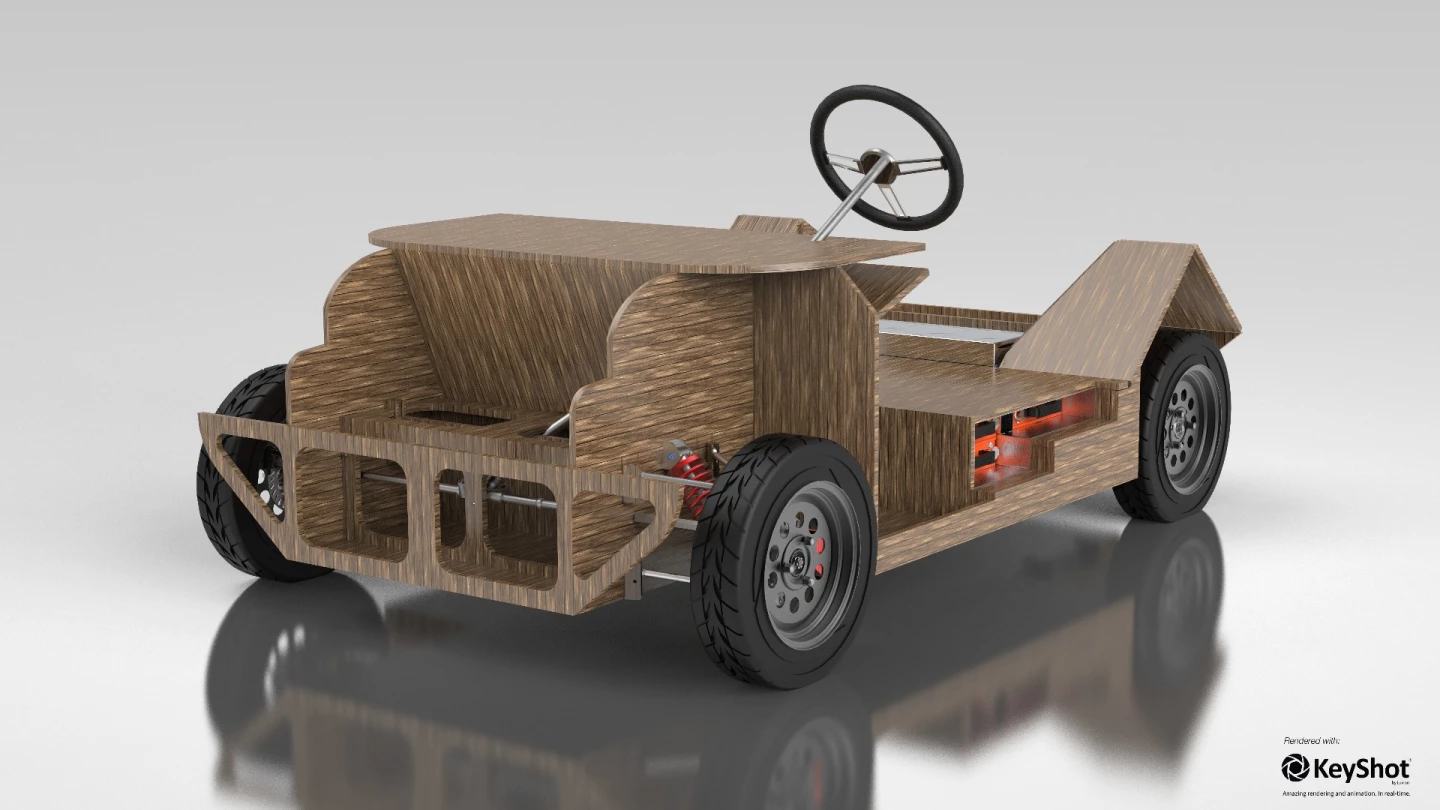Every year for the past few years, the ecomotive team at the Eindhoven University of Technology in the Netherlands has built an electric concept city car of the future. This year's project is called Noah, and is being billed as the world's first circular car. This doesn't refer to its appearance but rather its sustainable production and usage, and its end of life recyclability.
Last year's Earth Overshoot Day was August 2, which is calculated to be the day when "humanity's demand for ecological resources and services in a given year exceeds what Earth can regenerate in that year." The ecomotive team believes that the adoption of a circular economy – centered around smart design, using renewable resources and recycling – would help solve this over-use of resources.
The Noah (EM-05) battery electric two-seater will be fifth concept car from TU Eindhoven's ecomotive team, with last year's four-seat Lina model being the first to be constructed using biocomposite and bio-based plastics. That biocomposite was made mostly from flax, and said to have a similar strength-to-weight ratio as glass fiber.
For the 350 kg (770 lb) Noah, the biocomposite recipe has been tweaked so that it's now made up of more than 90 percent renewable materials. In previous ecomotive concepts, a matrix of polypropylene bridged the gap between two biocomposite panels. This honeycomb-like center is now made from sugarcane PLA, meaning that the PLA/biocomposite sandwich is fully recyclable. Moreover, chassis and interior panels are designed to be detachable, to make recycling or re-use easier.

The design team says that the Noah's drivetrain has been optimized for 97 percent efficiency during acceleration, and 100 percent efficiency at cruising speeds – though no data has yet been given to support those figures. We do know that the setup is expected to get the vehicle up to about 100 km/h (62 mph) and offer a total range per charge of 240 km (150 miles). And that the motors will get their power from six modular batteries that can be hotswapped for fresh ones when in need of a recharge. The design also offers the potential to make use of better batteries as and when they become available.
The concept city car will feature NFC sensors in the doors, meaning they can be unlocked using a smart device. The internal parameters can be adjusted to suit recognized occupants, and the vehicle will also feature built-in Wi-Fi – all of which hints at potential usage in car sharing services.
Now that the design has been finalized, the TU Eindhoven team will set about building the vehicle in the coming months. After that, the Noah will be put through roadworthiness and safety testing ahead of license plate application.
Assuming it passes inspection, the team will embark on a meet and greet tour of select European cities from about June/July onwards. Meanwhile, you can have a brief look at the design in the video below.
Source: TU/ecomotive








